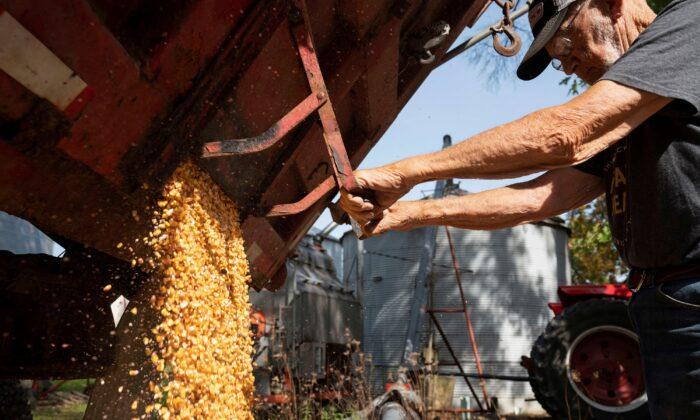CHICAGO—U.S. farmers are planning to boost corn acreage in 2023, eyeing lower prices of fertilizer needed to grow the crop and hoping for a bumper crop after a late season drought withered last year’s grain harvest and left U.S. corn supplies near a decade low.
Plans for the upcoming season were made even as doubts mounted about demand and price gains for soybeans outstripped corn late last year. But early acreage forecasts and interviews with farmers show their faith in the biggest U.S. crop has not waned.
A big crop from the world’s largest corn exporter, pared with more modest demand as global economic growth cools, could further ease prices for the staple used in fuel and animal feed that have come down after surging to a 10-year high when Russia invaded major corn producer Ukraine a year ago.
The decline in the cost of key inputs such as fertilizer in the second half of 2022 sparked hopes that corn would be profitable in 2023 even though it typically requires a more-active management style and greater financial investment than the No. 2 U.S. cash crop, soybeans.
“We are going to be heavy corn and probably the heaviest on corn we have been in a long time,” said Brandon Hunnicutt, who farms 2,300 acres with his father and brother near Giltner, Nebraska.
The budget for his farm’s 2023 crops, devised as the 2022 harvest wound down, calls for about 90 percent of those acres to be devoted to corn, Hunnicutt said. That compares to about 55 percent in 2022.

Hunnicutt cited the reliability of corn yields as a key reason to go big on corn in 2023.
“On corn, it is a little more scientific,” he said. “Soybeans can kind of be a ‘Well, I guess we will spray a fungicide and see if it works.’”
Demand Wanes
U.S. farmers alternate between soybeans and corn in a bid to maintain soil health. After favoring soybeans last year when fertilizer prices spiked, many are set to devote the majority of those fields to corn.“It would take something pretty monumental to switch a bunch of acres around,” said Ohio farmer Scott Metzger.
But the corn bushels might have a hard time finding a home after harvest starts in September.
Since last year’s harvest, exporters have booked sales of just 24.038 million tons of U.S. corn, down 43 percent from a year earlier, according to U.S. Agriculture Department data.
In January, the government issued its most recent corn export forecast for the full year: 48.9 million tons, which was 19.8 percent below the initial export projection in May 2022.
Hopes for Better Crop
Recent U.S. Agriculture Department data showed that after a drought last August, farmers were forced to abandon the highest percentage of their corn acreage in the past 10 years. This winter’s weather has done little to replenish soil moisture the crop will need during the upcoming growing season.Last year’s harvest shortfall left corn supplies at their lowest since 2013 and made farmers hopeful that prices would rally in the coming months.
Illinois farmer Ellen Rahn plans to devote about 75 percent of the 1,600 acres of her farm to corn. She followed a similar strategy of increasing corn acres after the drought of 2012 wrecked harvest across the Midwest, sending stocks to their lowest in nine years and supporting prices for the 2013 crop.
“We are in a good part of the world ... where we are usually guaranteed decent yields,” Rahn said.





